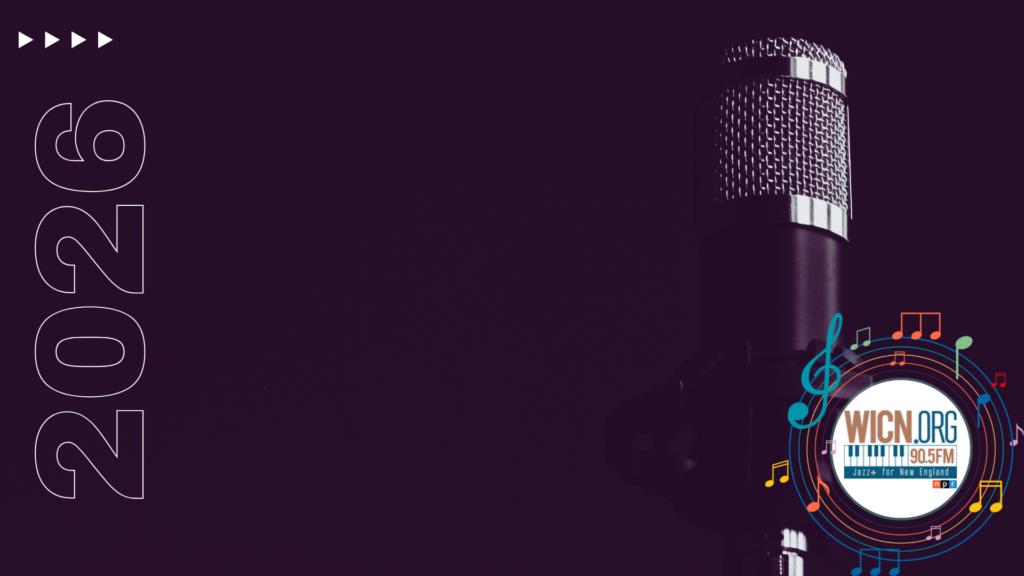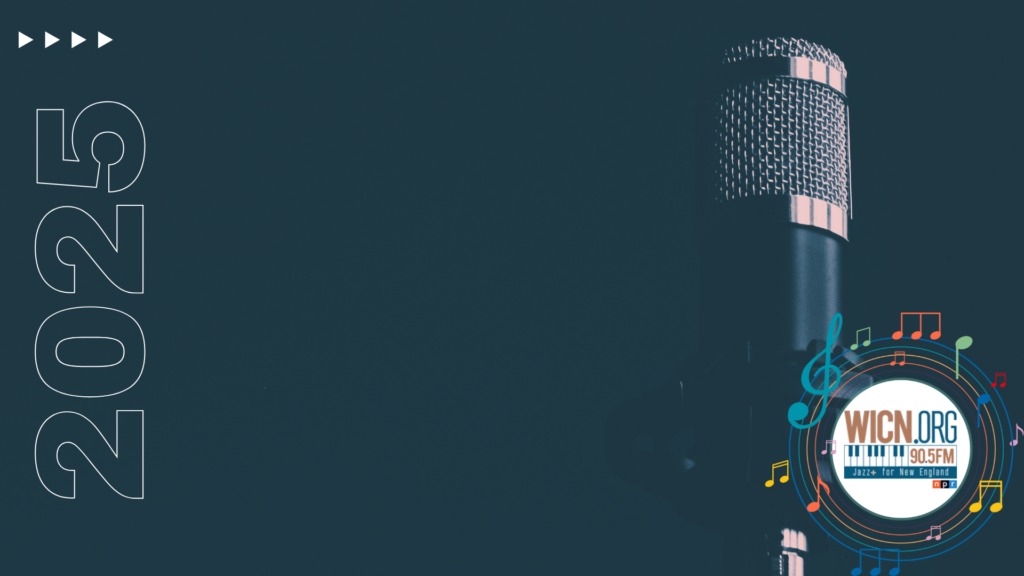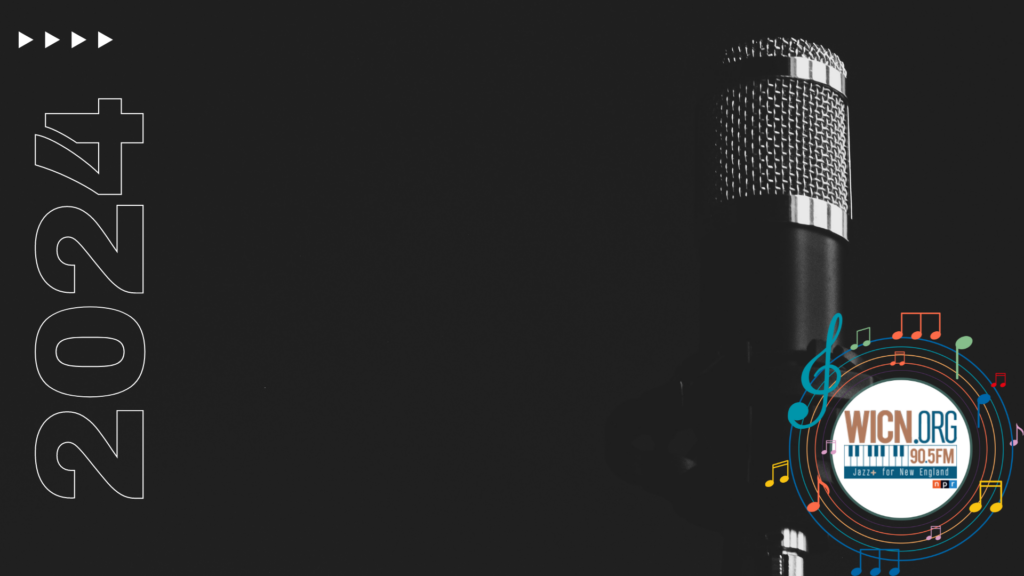WICN Artist of the Month, October ’24: Illinois Jacquet
Written by Doug Hall on October 1, 2024
Given the transitory lifestyle and traveling nature of jazz musicians in the ‘40s and ‘50s particularly, as a regular circuit of cities throughout the US offered venues reached mostly by long, often overnight bus rides—the equivalent of today’s red-eye flights–sidemen of this era often led a nomadic life. These many remarkable musicians, some more in demand by reputation, were often associated and performing with a who’s who of big bands and orchestras that are today long acknowledged as jazz royalty. Saxophonist Illinois Jacquet, a highly influential and early featured soloist, with a much-copied onstage intensity, and innovative style of “honking” his saxophone, performed and recorded with top bandleaders during the swing, bebop, and jump blues periods. His resume includes performances with Louis Armstrong, Nat King Cole, Dizzy Gillespie, Ella Fitzgerald, and Miles Davis. He also played in both the Count Basie and Cab Calloway big bands and established his own, the Illinois Jacquet Big Band, in 1981.
Coming from a musical family, Jacquet started out playing the trumpet, but once he heard Basie’s band and their lead saxophonist, he was committed to changing instruments. He recalled this specific initiating moment in an interview: “It was in 1938 when I was going into my senior high school year, that the Count Basie band came through. And when I heard Lester Young and Herschel Evans with Basie, and Coleman Hawkins with Fletcher Henderson’s band, I knew that I was going to be a saxophone player, because I enjoyed what I heard so much.”
His first professional big band association was with Lionel Hampton, who was organizing his orchestra in 1940. Based on a friendship with pianist Nat King Cole, Jacquet was introduced to Hampton and was asked by the bandleader to change his instrument from trumpet to tenor saxophone, and officially the instrument change was finalized.
In an age where dance halls were holding competitions (or “battles”) between big bands as a lure to draw youthful audiences, Hampton was a supercharged personality on stage, a showman, dazzling audiences with his dexterity and virtuosity on the vibraphone. Jacquet would absorb Hampton’s frenetic energy and chose to exaggerate his physical style on stage as well. “See, I’d been eighteen when I joined Lionel Hampton; as well as being a great musician, he’s one of the greatest showmen you’ll ever run across in the music business. It rubbed off on me, although it was already there; he just ensured that it was expressed, that’s all.”
In 1942, fame would find Hampton and consequently bring attention to Jacquet with the hit Flying Home. Jacquet was to play a memorized solo at the end of the composition to “bring down the house.” As a signature solo, using a unique “honking” style of playing through the mouthpiece, it was later played note-for-note by several saxophonists who followed him in Hampton’s band, including Arnett Cobb and Dexter Gordon.
In ’43, Jacquet left Hampton and joined Cab Calloway’s band when Lena Horne was the featured vocalist, coinciding with her movie musical Stormy Weather, a breakthrough in the color barrier in film, musically backed by Calloway‘s band, which included Jacquet soloing on saxophone and Bill “Bojangles” Robinson performing as a tap dancer, actor, and singer.
From ‘44-‘45, Jacquet returned to California and formed his own band with his brother Russell and a young Charles Mingus, re-recording Flying Home in a two-part version, and recording popular hits Bottoms Up and Illinois Stomp. During this same time period, his technique was becoming a much-copied style. Jazz critic Scott Yanow describes the instrumental impact thusly: “Jacquet featured not only variations of “Flying Home” (often under different names with slightly different melodies) but warm ballads and blues. He recorded regularly and toured constantly… While many of his fellow tenors who drew inspiration from “Flying Home” put on rambunctious and sometimes excessive displays (with marathon solos full of repetition, honks, and screams), Jacquet stopped biting his reed and grew as a consistently exciting swing-based soloist. He had a big tone and was considered one of the most famous in the line of ‘tough Texas tenors.’” Jacquet was directly inspired by Coleman Hawkins and Herschel Evans as his sound matured, yet his phrasing changed to “a more modern sense,” which was a direct influence of Lester Young.
Within the same year, he would appear in the Academy Award-nominated short film Jammin’ the Blues with his idol Lester Young and would also appear in the first Jazz at the Philharmonic, which became a series of jazz concerts, tours, and recordings produced by jazz record producer and music promoter Norman Granz.
Through his performance and touring with Cab Calloway’s band, he would meet the legendary bassist Milt Hinton and begin an association in the Addisleigh Park area of Queens, New York that became a magnet of luminary Black jazz musicians who represented the “golden period” of creativity established by this community. A related article in the Queens Chronicle newspaper references this historical period, acknowledging this concentration of jazz musicians who comprised this neighborhood, “During the late 1940s and ’50s, successful African-American musicians, many of whom were originally from less urban places in the south, flocked to the upscale neighborhood, with its large lots and nearby golf course. ‘In no time at all, we had assembled the greatest community of Black people outside of Harlem,” Jacquet said in an interview. His neighbors included Ella Fitzgerald, Fats Waller, John Coltrane, Charles Mingus, Clarence Williams, James P. Johnson, Roy Eldridge, and Lena Horne (with whom he starred in the film Stormy Weather).
In 1946, by now relocated to New York City, Jacquet joined the Count Basie Orchestra, replacing the legendary Lester Young – the saxophonist who had the most important singular influence on Jacquet. He was also most notably featured on the composition, The King and Mutton Leg.
In the 1950s, he would find significant and extensive recording opportunities on jazz producer Norman Granz’s label “Clef” and was part of Granz’s studio jam session albums with big-name personnel including Dizzy Gillespie, Roy Eldridge, Johnny Hodges, Ben Webster, and Oscar Peterson.
During the 1950s to 1960s, Jacquet remained in high demand during a challenging period for most jazz musicians. He starred on an album in 1959 as the head of an 11-piece group, Illinois Jacquet Flies Again. As noted by jazz critic Scott Yanow, this period was a high-water mark in exceptional recordings, particularly on his Prestige recordings of 1968-69 (Bottoms Up, The King, Soul Explosion, and The Blues That’s Me). Coincidentally, Jacquet picked up the bassoon, which he utilized as an occasional change-of-pace instrument, recording relaxed versions of Caravan, and ’Round Midnight during his Prestige period.
Jacquet’s touring and live performance schedule remained very active throughout the 1970s, with extensive tours in Europe with a variety of bands and bandleaders including Lionel Hampton. He was invited by Newport Jazz Festival founder and director George Wein to be a part of the 1972 jam sessions at Newport in New York. There were additional highlight recordings with Buddy Rich, Buddy Tate, trumpeter Howard McGhee, and singers Carrie Smith and Jimmy Witherspoon as well.
In 1981, Jacquet formed his own big band, the Illinois Jacquet Big Band, which lasted until he died in 2004. The big band featured standout tracks including Tickle Toe, Smooth Sailing, Stompin’ at The Savoy, Jacquet’s Port of Rico, and Flying Home.
In 1993, he would be honored by then President-elect Bill Clinton with an onstage performance of C-Jam Blues during Clinton’s inaugural ball.
His legacy stands as an exceptional sideman and soloist on tenor saxophone, and also a true innovator who opened creative doors for other horn players. Jacquet would also help keep the big band sound alive from the ‘80s until he died in 2004, revitalizing its popularity both at home and abroad and drawing new audiences. His 1942 signature song Flying Home will remain recognized as a launch pad for many notable tenor saxophonists and following generations.
Illinois Jacquet died in 2004 at 81 years old. The Washington Post’s obituary encapsulates his life thusly: “Saxophonist Illinois Jacquet Dies”.


